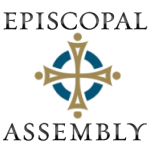For several years different groups in Massachusetts have attempted to pass a law that would make Physician Assisted Suicide legal in the Commonwealth. One such bill is making its way through the Massachusetts State Legislature at the present time. The aim is to place this on the ballot for the General Election in November.
H 2233 An Act relative to death with dignity was filed By Stoughton Democrat Louis Kafka on January 24, 2011 with the support of six Representatives and referred to the Joint Committee on the Judiciary. At the time of this writing the bill is sitting the Join Committees hands and no public hearing has been scheduled. The State Legislature has to act by the end of May of the question is to appear on the ballot in November.
In September of 2011 Massachusetts Attorney General Martha Coakley certified the measure and the backers had to collect 68,911 signatures state wide. That is what led to the filing of the legislation. Legislatures can pass the legislation which would then become law send it to the ballot for the voters to decide, or do nothing. If the latter route is chosen the organizers would then have to collect an additional 11,485 signatures to place the question on the ballot.
In essence the bill would allow, “for legislation to allow for physician assisted suicide for qualified patients to end their lives” and this is unacceptable for an Orthodox Christian. In his book, Contemporary Moral Issues Facing Orthodox Christians, Orthodox Moral Ethicist Fr. Stanley Harakas states; “The Orthodox Church has always taught that euthanasia constitutes the deliberate taking of human life, and as such is to be condemned as murder.”
At the annual meeting of the Massachusetts Medical Society in December of 2011, the President of the Society, Dr. Lynda Young had this to say about the pending legislation; “Physicians of our Society have clearly declared that physician-assisted suicide is inconsistent with the physician’s role as healer and health care provider. At the same time we recognize the importance of patient dignity and the critical role that physicians have in end-of-life care,” (emphasis added)
In this writers opinion this Legislation needs to be defeated. The Legislature is the first place to make our voice heard. Let your Representatives know how you feel on this issue. Contact them by phone, letter, or email it only takes a few moments. If you are unsure of who your Representatives are you can look them up
here. A text of the bill can be found
here, and the members of the Joint Committee on Judiciary can be found
here.
Let your voice be heard, the time to act is now.



